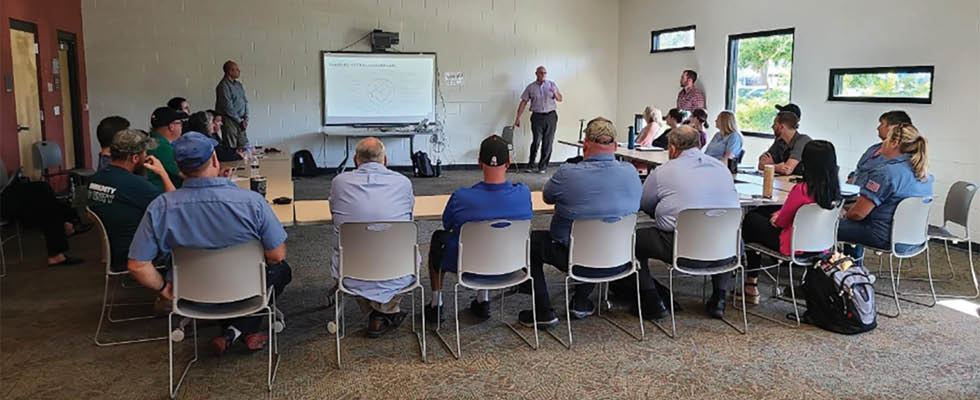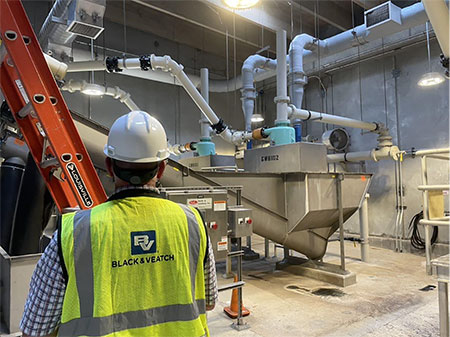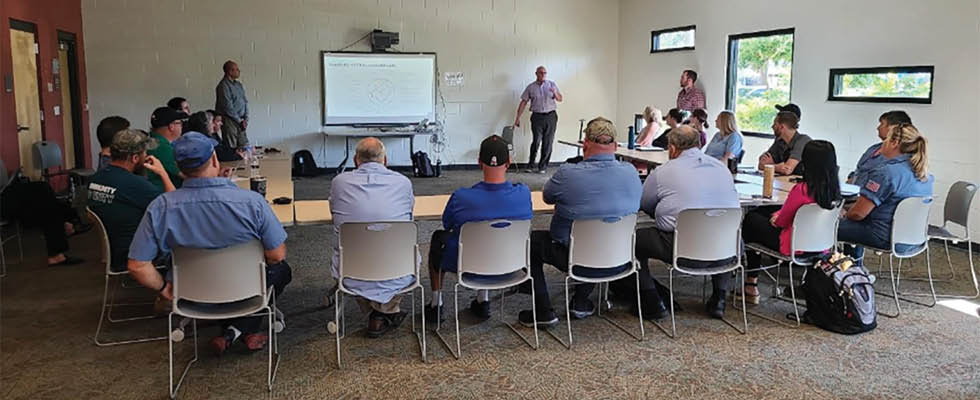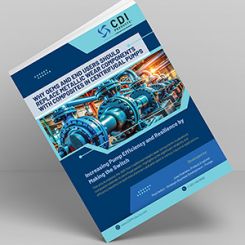
Water and wastewater utilities lived by one rule for decades: Build at least one level of redundancy into everything. When something broke, they switched to the backup. Problem solved. But not anymore.
The Environmental Protection Agency estimates it will cost $625 billion to meet the nation’s water infrastructure needs to maintain service levels over the next couple of decades.1
The same utilities that once deemed condition monitoring too expensive are now scrambling to install it, and where that is not possible, to use mobile condition monitoring. The question changed overnight from whether they would adopt predictive/condition-based maintenance to whether they could do it fast enough.
When Everything Hits at Once
Three things happened, nearly all at the same time.
First, the qualified technicians began to vanish. Many utilities face the same issues: They do not have enough people. Older workers are retiring. Younger workers are not replacing them in the numbers needed. There are not enough experienced people to hire, so facilities have started apprenticeship programs, knowing it takes two to three years to build the skills they need.
Second, the industry began installing water-efficient toilets and made a concerted effort to reduce water usage. Water-efficient fixtures gave wastewater plants artificial capacity, but equipment sat idle for years. Utilities got comfortable, but then the populations grew. As flows started to pick up again, equipment that had been mothballed or was used as redundancy suddenly needed to work again or be consistently used to meet design capacity.
Third, deferred maintenance became an issue. Some of the biggest risks have been created by deferring maintenance, because utilities have been able to rely on redundancy. The result was years of patchwork maintenance—fix the immediate problem and defer everything else.

The answer to these issues has unfortunately, for some, been permit violations, bad publicity and dwindling trust from their users.
With only so much capital funding, utilities focused on prioritizing critical asset replacement to smooth out the capital spend. This resulted in maintenance costs increasing to extend the useful life of equipment. The industry’s old rules were not just breaking; they were becoming liabilities.
Technology Flipped the Script
While utilities wrestled with these mounting pressures, technology became less expensive and easier to use for identifying potential failures.
Twenty to 30 years ago, an infrared camera could cost as much as $25,000. Those units can now be bought quite affordably from multiple sources at a fraction of the cost.
At the same time, systems are less complicated to use. Modern vibration analysis systems generate reports that any technician can understand. The deep analysis still requires experts, of course, but if a user needs to start troubleshooting or conducting a root cause analysis, that is when they should lean on individuals with a more technical background. But the initial screening? All automated.

Utilities have always been conservative by nature, and for good reason. When a group is responsible for public health and environmental compliance, they do not take chances with unproven technology.
In order to shift mindsets in many utilities, it will likely come down to dollars and cents.
Pattern recognition becomes very important in resolving recurring problems. Usually, it is on pumps due to misalignment during installation.
Breaking Old Habits
Technology is just half the battle. The maintenance evolution is not just about technology—it is about mindset.
Old way: Belts on large fans were inspected every three months, which required a shutdown and removing covers to access the belts. Then the technician would look at the belt, typically use their finger to check for proper tension (instead of relying on technology) and then put the belt back in service.
New approach: The switch to vibration analysis allows users to detect when the belts are beginning to slip. When there are indications of belt slippage, maintenance can be conducted immediately rather than every three months.

Pump stations are another example of change. The old way was to send personnel to check on pump stations five days a week. With the help of newer technology, it is possible to reduce that to three days a week. This can then possibly be cut back even further to twice a week. Eventually, it may only be necessary to perform a midweek check while experiencing no increase in failures.
Trust does not come easily. People are used to having their eyes and hands on a piece of equipment, and that is a hard shift for people who have been doing the same thing for 15 to 20 years.
The Practical Path
Proactive utilities have figured out they do not need to do everything in-house once they have identified what critical equipment should be part of a predictive maintenance program. One solution is to contract out the predictive maintenance program and activities, as tooling up does not always make sense. This way staff can focus on core business while receiving valuable recommendations on which equipment is starting to show indications of failure.
What Happens Next
Two futures are emerging. Smaller utilities get a lifeline. The operator will not have to become as skilled in the maintenance world and will be able to utilize technology to identify imminent failures and plan the outage to complete the repair.
At the same time, larger utilities get the advantage of planning outages, and maintenance departments can increase their resource capacity. Technology will enable them to accomplish more with the same number of people.
The real challenge is not technical; it is cultural. There is a misconception that technology eliminates jobs, but reducing staff is often not necessary. Instead, the goal is for it to free up time for staff to focus on the backlogged work that should have been completed.
Additionally, many utilities assume they can downsize their staffing levels with new technology. While this is partly true, it is also necessary to re-skill some workers. For example, as more instrumentation is added, those instrument points will require calibration and testing to ensure the reliability of the data. This often means more instrumentation technicians are needed than before. The bottom line remains simple: Focus highly technical staff on critical tasks, then utilize technology to handle routine monitoring and diagnostics.
This transformation is accelerating. In order for utilities to survive the reduction in qualified workforce and increased demand, they must understand that condition monitoring is not an expense; it is insurance against catastrophic failures, permit violations and the far greater costs of reactive maintenance. The question is not whether utilities can afford to invest. It is whether they can afford not to.

